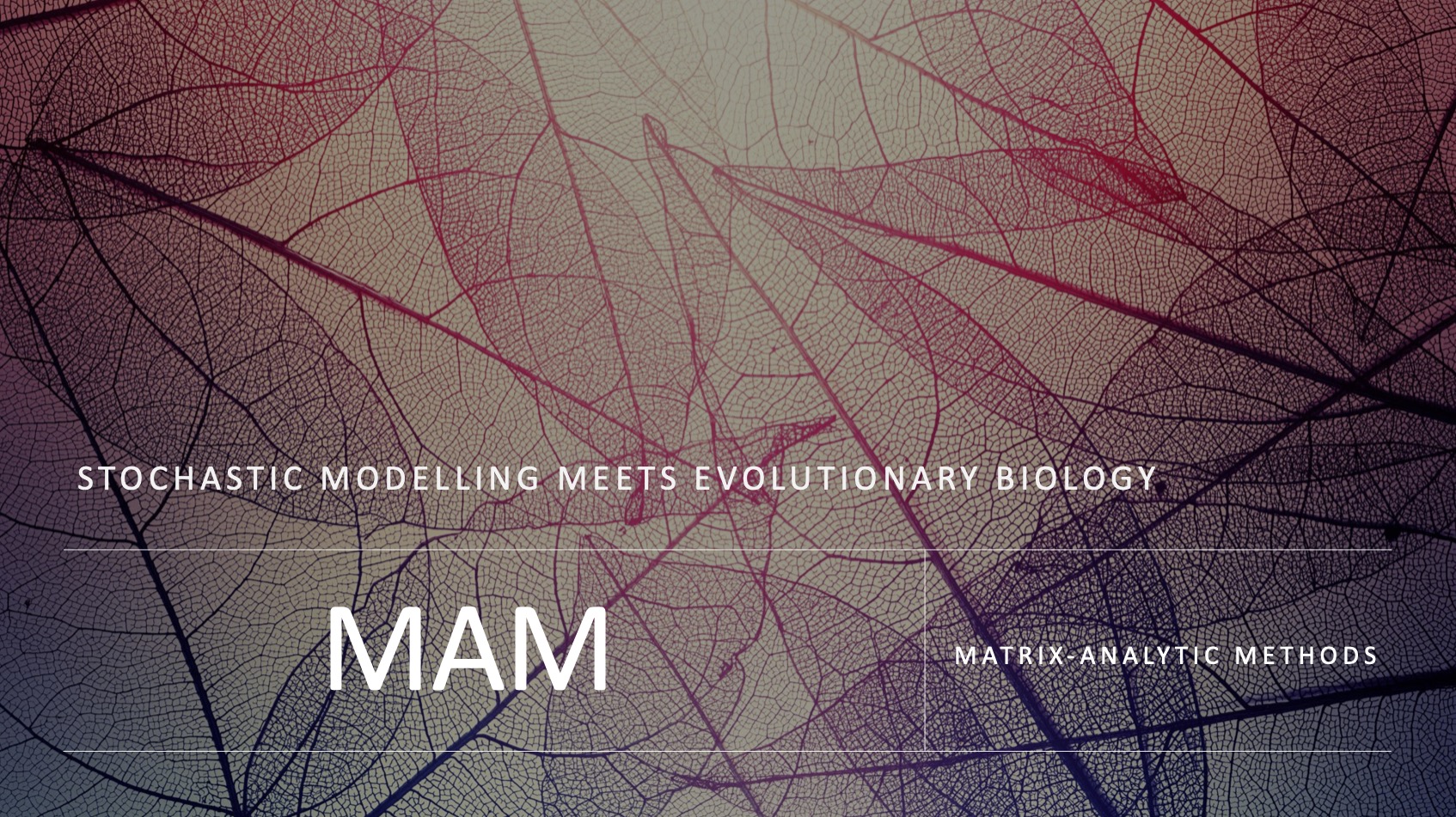Stochastic modelling meets evolutionary biology
A technical training workshop that will provide an overview of models from matrix-analytic-methods (MAMs) and how they could be used in practical applications.
Speakers
Event series
Content navigation
RegisterDescription

Workshop outline
- Overview of major classes of models within matrix-analytic-methods (MAMs) that are efficient in applications (phase-type distributions, quasi-birth-and-death processes, stochastic fluid models, Markovian binary trees).
- How to construct these models for specific problems and data in biodiversity analyses.
- What are the key metrics that are interesting in applications and how to compute them.
- Examples of applications to a range of problems in biology, phylogenetics, and healthcare.
Target audience
Academics and students from the fields of evolutionary biology, phylogenetics, mathematics.
In the practical session, participants will be given examples for the application of PH distributions and QBDs to various biological problems, with Matlab code and R code provided. Attendees will need to bring their own laptops with Matlab and R installed.
For ANU staff and students, ANU has a university license for Matlab, which can be downloaded from here. Before downloading, you will need to create an account using your ANU email address.
For non-ANU participants, Matlab offers one-month free trial that can be downloaded here.
Schedule
|
9:30am |
Talk: Phase-type (PH) distributions and applications |
Małgorzata O’Reilly; Barbara Holland |
|
10:35am |
Coffee/tea break (provided) |
|
|
10:55am |
Talk: Quasi-Birth-and-Death processes (QBDs) and applications. |
Małgorzata O’Reilly; Barbara Holland |
|
12:00am |
Lunch break (purchase own at ANU) |
|
|
1:30pm |
Practical: PH distributions, QBDs. |
Małgorzata O’Reilly; Barbara Holland; Qin Liu |
|
2:35pm |
Coffee/tea break (provided) |
|
|
2:55pm |
Talk: Stochastic fluid models (SFMs), Markovian Binary Trees (MBTs) and applications. |
Małgorzata O’Reilly; Barbara Holland |
|
4:00pm |
Workshop ends |
|
About the presenters
Barbara Holland is a Professor of Mathematics at the University of Tasmania. Barbara applies mathematics and statistics to problems in evolutionary biology or population genetics. In particular, her research has focused on problems in phylogenetics. She is interested in developing tools that can assess if sequence data is well explained by a simple tree model or if more complex processes such as hybridisation, recombination or convergent selection are at work.
Małgorzata O'Reilly is an Associate Professor in Mathematics at the School of Natural Sciences. Her research interests are stochastic modelling, operations research, matrix-analytic methods, applied probability, health care systems modelling, satellite data analysis, and phylogenetics.
Their visit is funded by the Centre for Biodiversity Analysis, hosted by Xia Hua (Australian National University). Please get in touch if you would like to meet with Barbara, Małgorzata and Qin during their time in Canberra (29 May - 1 June).
Location
Slatyer Seminar Room, 2nd floor, RN Robertson Building, Research School of Biology, ANU, Canberra




